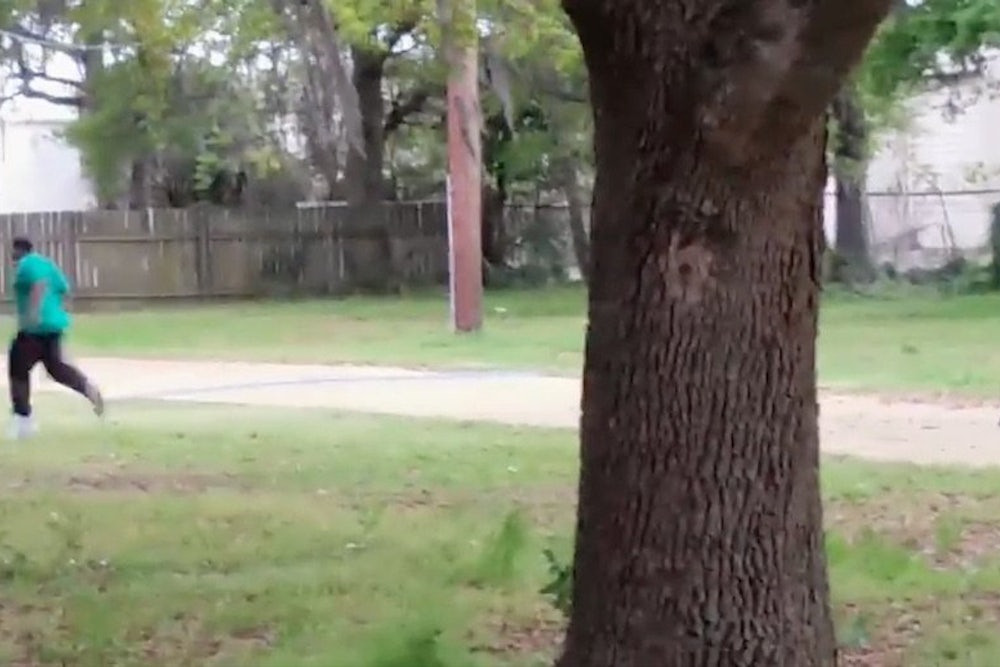Yesterday The New York Times published a video showing a police officer, Michael T. Slager, fatally shooting a black man, Walter L. Scott, as he ran away from the officer.
The video is disturbing enough by itself. But it becomes even more troubling when we consider how radically at odds the visual evidence seems to be with the police incident report filed on the killing. As the Times notes, Slager “said he had feared for his life because the man had taken his stun gun in a scuffle after a traffic stop on Saturday.” Yet the video shows Scott killed in flight, something like 20 feet away when the final bullet hit. After the shooting, Slager is shown placing an object next to Scott’s prone body. According to the Times, police reports also claim that officers performed CPR on Scott, an assertion not borne out in the video.
The death of Walter Scott will add more tinder to the already blazing political debate over police violence. The apparent contradictions between the incident report and the video highlight an overlapping but distinct problem: The police don’t always tell the truth. Police violence and police lying are two separate problems, although they also reinforce each other. Police violence flourishes in part because of the prevalence of police lying, which is rarely challenged by the criminal justice system.
In the Scott killing, there is good reason to believe that without the powerful counter-evidence provided by the video, which led to Slager being charged with murder yesterday, the police incident report would have been accepted as the official account of the shooting. Indeed, the persuasive power of police testimony extends outside official channels. Prior to the emergence of the video and Slager’s arrest, Slager’s version of events was echoed by the local media in South Carolina as if it were factual.
Police lying doesn't just act as a shield for police violence, but as a larger source of corruption in the criminal justice system. Criminal cases are always narrative battles: Prosecutors and defense attorneys compete to win cases by presenting the most plausible stories consistent with admissible evidence. The police play a crucial part in this system as a supplier of narrative facts, in the form of both reports and testimony under oath.
As Ohio State law professor Michelle Alexander noted in a 2013 article in The New York Times, there is a powerful social presumption that we should put our faith in cops. “As a juror, whom are you likely to believe: the alleged criminal in an orange jumpsuit or two well-groomed police officers in uniforms who just swore to God they’re telling the truth, the whole truth and nothing but?” Alexander said that this abiding faith in the police is misplaced: “In this era of mass incarceration, the police shouldn’t be trusted any more than any other witness, perhaps less so.”
Alexander’s contention rests on a strong scholarly literature about “testilying”—the practice of police officers committing perjury to secure a conviction, usually against someone they think is guilty. In a classic 1996 article for the Colorado Law Review, Vanderbilt Law professor Christopher Slobogin demonstrated that both “reportilying” (falsifying police reports) and “testilying” are pervasive in many American jurisdictions.
Police perjury, Slobogin argues, occurs because “police think they can get away with it. Police are seldom made to pay for their lying.” Not just prosecutors but even many judges see themselves as sharing a common set of goals with the police of making sure the guilty get punished. Working in a shared enterprise, they are loath to challenge police perjury. “Prosecutors put up with perjury because they need a good working relationship with the police to make their cases,” Slobogin notes.
Slobogin documented his case by citing a compelling 1992 study by Myron Orfield of the Chicago criminal justice system showing that a large percentage of judges, prosecutors, and defense attorneys acknowledge the reality of police perjury: “In his survey of these three groups (which together comprised 27 to 41 individuals, depending on the question), 52 percent believed that at least ‘half of the time’ the prosecutor ‘knows or has reason to know’ that police fabricate evidence at suppression hearings, and 93 percent, including 89 percent of the prosecutors, stated that prosecutors had such knowledge of perjury ‘at least some of the time.’”
If officer Slager did fabricate his incident report in the Scott killing, he wasn’t being a bad apple but rather adhering to a dishonesty that is all too common in American police forces. Such is the credence given to police reporting that Slager’s rendition of events was only overturned by the compelling counter-narrative offered by the video, shot by a civilian onlooker.
Videos, including police body cameras, are not a panacea to the problem of police violence. The 1992 Rodney King trial alone should remind us that compelling visual testimony can be overridden by the social trust many jurors give to police. Still, in a society where both the state and many citizens are too credulous about police testimony, videos are often the best way to break the stranglehold of the official narrative.
